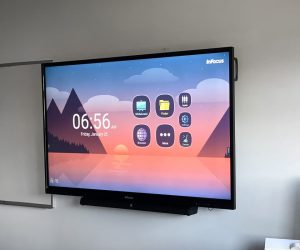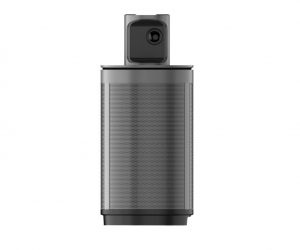INFOCUS DEBUTS JUPITER PIXELNET 2.0

![]()
InFocus Corporation announces PixelNet 2.0, a significant update to the Jupiter PixelNet solution. The new distributed display wall system increases the density of processing power, connecting more sources and displays to a single input or output node, while providing centralised control to support a wide variety of installations with live audio and video, streaming data, and other real-time sources of information for control rooms, conference rooms, lobby displays, offices and classrooms. New features enable real-time HD or 4K information display to a virtually unlimited number of screens at sites spanning a building, a campus, or a continent.
PixelNet 2.0 input and output nodes can now be configured with fibre optic connections via SFP+, or with Ethernet. Fibre network capabilities allow PixelNet 2.0 to support very large distributed systems with an unlimited number of sources and displays across multiple locations and vast geographies. Applications including redundant control room display walls in multiple locations, manufacturing and process management, digital signage, law enforcement and security monitoring, and instructional networks. PixelNet 2.0 systems can scale to suit any requirement to connect and distribute video across buildings, campuses, or global networks.
With PixelNet Domain Control (PDC), centralised configuration and management of the system and its content is simple. The PDC mimic function allows operators to visualise any video wall or single display in the network, placing any video or data source in a window anywhere on the wall or within a single screen. A single source of information can stretch across a large video wall for easy viewing, or multiple sources can be viewed in many windows to enable simultaneous monitoring of complex processes. Multicasting allows streams to be shared at multiple sites.
PixelNet 2.0 delivers an increased density of processing power and connectivity, which yields a per channel price reduction of 30-40% over its predecessor. Users from enterprise to government to education will benefit with reduced project costs or the ability to expand the size of projects.
“PixelNet was revolutionary at its original debut in 2008,” said InFocus CMO Brady Bruce. “We took display wall technology that previously had been locked up in a single chassis and created a network of input and output nodes. We used networking technology to deliver uncompressed video for pixel perfect display. Taking advantage of a decade of experience and the latest technologies, we’ve pushed PixelNet 2.0 to deliver even more. Greater scalability, higher video quality, audio, more flexibility, and more value are the result. We think current PixelNet owners will be delighted, and we expect to win many new users with an unmatched user experience.”
Backwards compatible with first generation PixelNet systems, PixelNet 2.0 is easy to install and supported by the self-configuration feature in PixelNet Domain Control which automatically assigns available inputs and outputs. Content can be managed simply with the PixelNet Domain Control software, which allows users to drag and drop input sources across a display wall mimic, as well as provide control over multiple connected video walls.
Each PixelNet 2.0 Input Node allows the connection of four 4K or eight 1080p inputs, while each Output Node provides two 4K or six 1080p outputs, all rack-mounted. PixelNet 2.0 features high bandwidth networking for real-time streaming sources, pixel perfect visual quality using uncompressed video, and resolutions ranging up to 4K. New datacenter-grade Jupiter by InFocus switches support up to 100GB Ethernet connections.
Jupiter PixelNet 2.0 will debut at Integrated Systems Europe, the world´s largest AV systems integration show, at the InFocus stand #2-B60, from February 6 to 9, 2018.
InFocus: www.infocus.com
Australian Distributor: www.westan.com.au















RESPONSES